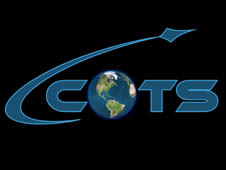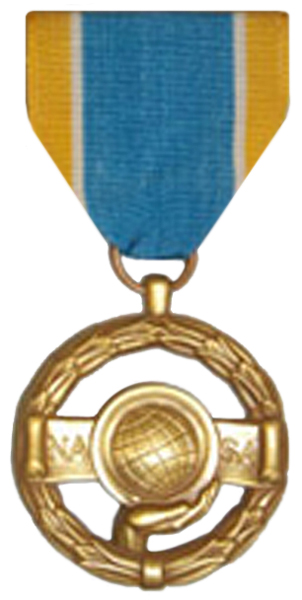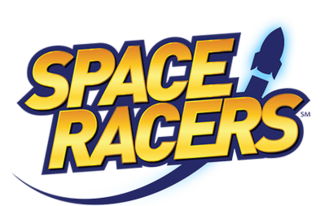
Jet Propulsion Laboratory (JPL) is a federally funded research and development center in Pasadena, California, United States. Founded in 1936 by Caltech researchers, the laboratory is now owned and sponsored by the National Aeronautics and Space Administration (NASA) and administered and managed by the California Institute of Technology.

Space Shuttle Columbia (OV-102) was a Space Shuttle orbiter manufactured by Rockwell International and operated by NASA. Named after the first American ship to circumnavigate the upper North American Pacific coast and the female personification of the United States, Columbia was the first of five Space Shuttle orbiters to fly in space, debuting the Space Shuttle launch vehicle on its maiden flight in April 1981. As only the second full-scale orbiter to be manufactured after the Approach and Landing Test vehicle Enterprise, Columbia retained unique features indicative of its experimental design compared to later orbiters, such as test instrumentation and distinctive black chines. In addition to a heavier fuselage and the retention of an internal airlock throughout its lifetime, these made Columbia the heaviest of the five spacefaring orbiters; around 1,000 kilograms heavier than Challenger and 3,600 kilograms heavier than Endeavour. Columbia also carried ejection seats based on those from the SR-71 during its first six flights until 1983, and from 1986 onwards carried an imaging pod on its vertical stabilizer.

Charles Frank Bolden Jr. is a former Administrator of NASA, a retired United States Marine Corps Major General, and a former astronaut who flew on four Space Shuttle missions.

Thomas Otten Paine was an American engineer, scientist and advocate of space exploration, and was the third Administrator of NASA, serving from March 21, 1969, to September 15, 1970.

Leroy Chiao is an American chemical engineer, retired NASA astronaut, entrepreneur, motivational speaker, and engineering consultant. Chiao flew on three Space Shuttle flights, and was the commander of Expedition 10, where he lived on board the International Space Station from October 13, 2004 to April 24, 2005. He is also a co-author and researcher for the Advanced Diagnostic Ultrasound in Microgravity project.

The Kennedy Space Center Visitor Complex is the visitor center at NASA's Kennedy Space Center on Merritt Island, Florida. It features exhibits and displays, historic spacecraft and memorabilia, shows, two IMAX theaters, and a range of bus tours of the spaceport. The "Space Shuttle Atlantis" exhibit contains the Atlantis orbiter and the Shuttle Launch Experience, a simulated ride into space. The center also provides astronaut training experiences, including a multi-axial chair and Mars Base simulator. The visitor complex also has daily presentations from a veteran NASA astronaut. A bus tour, included with admission, encompasses the separate Apollo/Saturn V Center. There were 1.7 million visitors to the visitor complex in 2016.

Commercial Orbital Transportation Services (COTS) was a NASA program to coordinate the development of vehicles for the delivery of crew and cargo to the International Space Station by private companies. The program was announced on January 18, 2006 and successfully flew all cargo demonstration flights by September 2013, when the program ended.

Jane Poynter is an American aerospace executive, author and speaker. She is founder, co-CEO and CXO of Space Perspective, a luxury space travel company. She was co-founder and former CEO of World View Enterprises, a private near-space exploration and technology company headquartered in Tucson, Arizona. Poynter was also a founding member of the Biosphere 2 design team and a crew member from the original two-year mission inside the materially closed ecological system.

Space Center Houston is a science museum that serves as the official visitor center of NASA Johnson Space Center in Houston. It was designated a Smithsonian Affiliate museum in 2014. The organization is owned by NASA, and operated under a contract by the nonprofit Manned Spaceflight Education Foundation, a 501(c)(3) organization. The Johnson Space Center is the home of Mission Control and astronaut training.

Michael Reed Barratt is an American physician and a NASA astronaut. Specializing in aerospace medicine, he served as a flight surgeon for NASA before his selection as an astronaut, and has played a role in developing NASA's space medicine programs for both the Shuttle-Mir Program and International Space Station. His first spaceflight was a long-duration mission to the International Space Station, as a flight engineer in the Expedition 19 and 20 crew. In March 2011, Barratt completed his second spaceflight as a crew member of STS-133. Barratt will pilot the SpaceX Crew-8 mission in spring 2024.

The National Aeronautics and Space Administration is an independent agency of the U.S. federal government responsible for the civil space program, aeronautics research, and space research. Established in 1958, NASA succeeded the National Advisory Committee for Aeronautics (NACA) to give the U.S. space development effort a distinctly civilian orientation, emphasizing peaceful applications in space science. NASA has since led most American space exploration, including Project Mercury, Project Gemini, the 1968–1972 Apollo Moon landing missions, the Skylab space station, and the Space Shuttle. NASA currently supports the International Space Station and oversees the development of the Orion spacecraft and the Space Launch System for the crewed lunar Artemis program, the Commercial Crew spacecraft, and the planned Lunar Gateway space station.

NASA's Exceptional Public Service Medal is a United States government awarded to any non-Government individual or to an individual who was not a Government employee during the period in which the service was performed for sustained performance that embodies multiple contributions on NASA projects, programs, or initiatives.
NASA has hosted many events for its social media enthusiasts called NASA Socials beginning in 2009. These events are targeted at the social media followers of NASA through platforms such as Twitter, Facebook, Google Plus, Instagram, YouTube and more. They provide guests with VIP access to NASA facilities and speakers with the goal of leveraging participants' social networks to further the outreach requirements of NASA as laid out in the National Aeronautics and Space Act. NASA re-branded these events as "Socials" in March 2012 as it expanded participation to services beyond just Twitter.

The NASA Launch Services Program (LSP) is responsible for procurement of launch services for NASA uncrewed missions and oversight of launch integration and launch preparation activity, providing added quality and mission assurance to meet program objectives. LSP operates under the NASA Space Operations Mission Directorate (SOMD).
Spacecraft and their missions are given descriptive, sometimes technical names, by scientists, engineers and administrators involved. Space agencies sometimes open the naming up to the public or to school children in the form of essay contests.

NASA Space Place is an educational website about space and Earth science

Space Racers is an American CGI preschool STEM-focused educational animated television series featuring the space travel cadets of the Stardust Space Academy. The series was produced by Space Race, LLC and co-produced by Maryland Public Television for season 1, and later WNET for seasons 2 and onward. The show began as a web series on March 22, 2011 entitled Space Race, then debuted as a television series on May 2, 2014 for public television on select PBS Kids stations. The second season of the show debuted on October 31, 2016 on Sprout. Since the second season, the show's original production funding was provided by NASA, which involves science and space technology education, in partnerships with U.S. Space & Rocket Center and U.S. Space Camp.

The NASA International Space Apps Challenge is an event where NASA Subject Matter Experts author challenges relating to real-world problems on Earth and Space and/or current NASA initiatives. Participants from around the world can form teams that work to develop solutions through the use of NASA and its Space Agency Partners’ open data over the two-day hackathon event.

The Swamp Works is a lean-development, rapid innovation environment at NASA's Kennedy Space Center. It was founded in 2012, when four laboratories in the Surface Systems Office were merged into an enlarged facility with a modified philosophy for rapid technology development. Those laboratories are the Granular Mechanics and Regolith Operations Lab, the Electrostatics and Surface Physics Lab, the Applied Chemistry Lab, and the Life Support and Habitation Systems (LSHS) team. The first two of these are located inside the main Swamp Works building, while the other two use the facility although their primary work is located elsewhere. The team developed the Swamp Works operating philosophy from Kelly Johnson's Skunk Works, including the "14 Rules of Management", from the NASA development shops of Wernher von Braun, and from the innovation culture of Silicon Valley. The team prototypes space technologies rapidly to learn early in the process how to write better requirements, enabling them to build better products, rapidly, and at reduced cost. It was named the Swamp Works for similarity with the Skunk Works and the Phantom Works, but branded by the widespread marshes (swamps) on the Cape Canaveral and Merritt Island property of the Kennedy Space Center. The Swamp Works was co-founded by NASA engineers and scientists Jack Fox, Rob Mueller, and Philip Metzger. The logo, a robotic alligator, was designed by Rosie Mueller, a professional designer and the spouse of Rob Mueller.

















